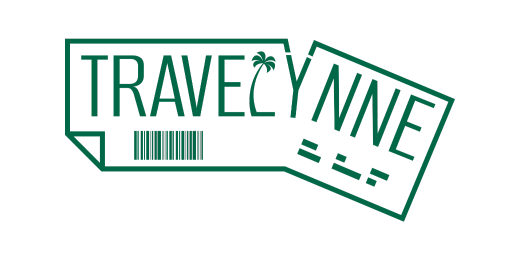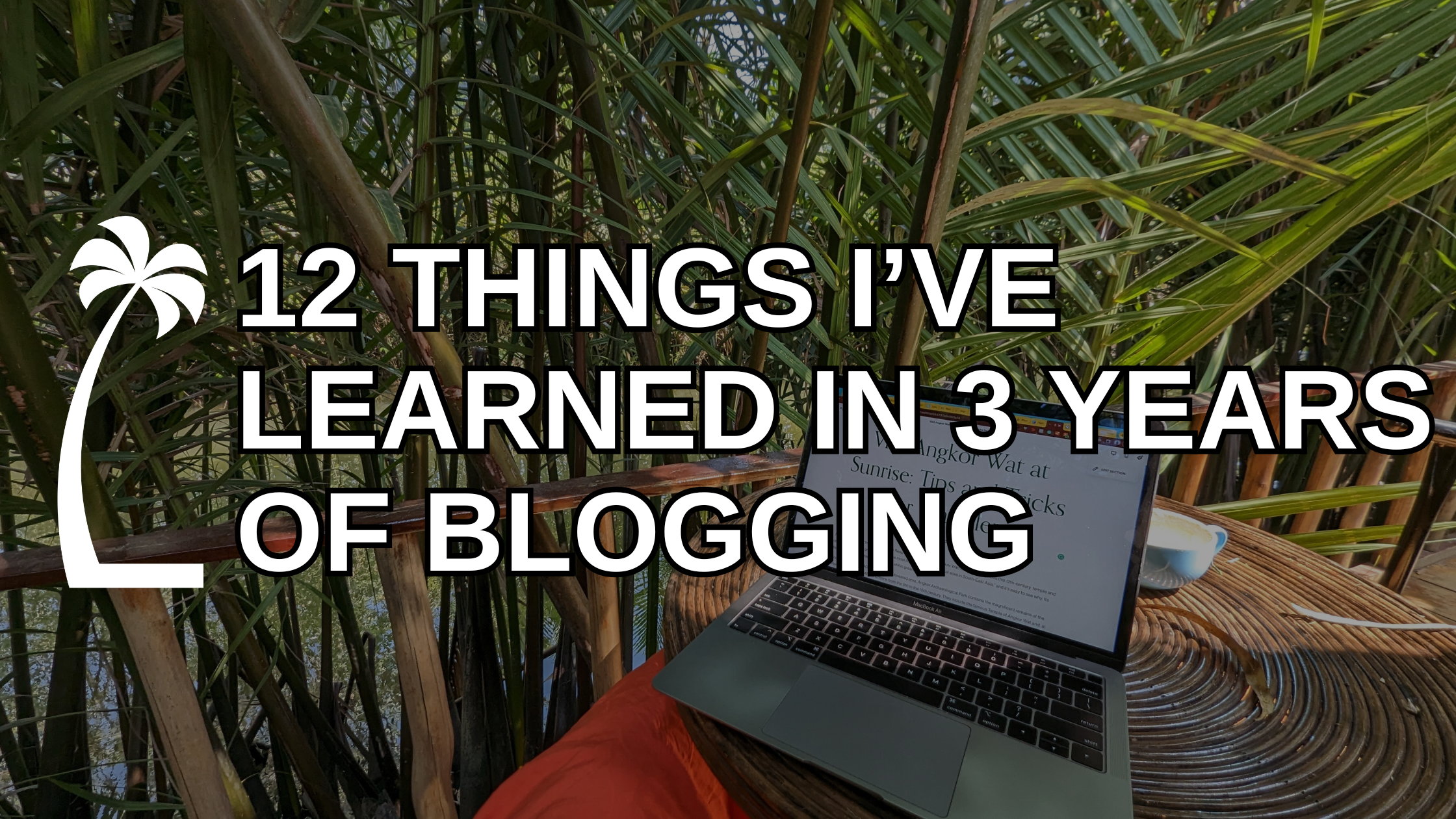Why I Chose Squarespace to Run My Travel Blog (and How It’s Going 3 Years Later)
Back in 2022, when I started my blogging journey, I had no intention of this becoming something I do “full-time” or even a profit-making endeavor. I enjoyed writing about travel and helping others experience the world, plus I wanted to learn about SEO and web design. Today, I am three years in with fairly significant success, having reached 20,000+ unique monthly visitors all through a side project, while working very busy full-time jobs!
I started out as a hobby blogger. I just wanted to share my travel writing, help others travel, learn new skills, and have some fun. Side note: I have managed to do all of that so far!
Along the way, I made some key decisions that helped me grow—starting with which platform to use. While many SEO-focused bloggers swear by WordPress for its flexibility, self-hosting, and plugin ecosystem, I took a different route. Let me share a bit about why and how I ended up hosting my travel blog on Squarespace, and how that’s going three years in.
Why I Chose Squarespace
Since my goals were leisurely, I wanted a platform that felt easy and intuitive. I was looking for a drag-and-drop design interface and something I could build 100% on my own, without paying for technical or design help.
Enter Squarespace.
(Also... I had found a great discount code for my first year, which sealed the deal.)
Now, if you’re a seasoned blogger reading this for some reason, then I’ll ask you to please pick your jaw up off the floor. I’ve learned that this is a highly controversial choice in the blogging and SEO community. I can somewhat understand why, but at the same time, I can’t—because I’ve managed to build a strong blog on this platform.
When it came to what I needed early on in the game, Squarespace provided:
✅ Ability to create and manage my entire website—no coding or outside help needed
✅ Easy-to-learn, fully customizable drag-and-drop design tools
✅ Intuitive blogging interface
✅ All-in-one hosting and domain setup (no separate hosting account needed)
✅ Built-in security (SSL) and mobile responsiveness
✅ Basic SEO tools baked in
✅ Responsive, friendly customer support (& yes, I did contact support a lot in those early weeks!)
✅ Loads of free tutorials and resources for beginners
“In my experience, Squarespace is a reliable and user-friendly all-in-one package that includes web hosting, a free domain name (with an annual plan), stylish templates, and excellent customer support. Because it’s so user-friendly, I’ve been able to self-manage everything—from design to blog publishing—without needing a developer or designer.”
This meant I could get started without extra purchases or steps, like buying separate hosting or installing plugins (which is typical with WordPress). Of course, there was still a learning curve for web design, even on Squarespace, but I found plenty of helpful resources—blogs, YouTube vlogs, and the Squarespace community forum—where you can find tutorials for almost everything.
Of course, no platform is perfect, and Squarespace has some noteworthy limitations—which I’ll get into shortly. But for someone starting from scratch, it was exactly what I needed. I have found Squarespace to be a beautiful, functional, and beginner-friendly platform for beginner bloggers or website builders.
This platform allowed me to grow Travelynne to 20K+ monthly readers all on my own. If that sounds like it meets your needs, you can get started with Squarespace here:
Blogging Platform Showdown: Other Options I Weighed
Before settling on Squarespace, I looked into several other popular platforms, especially WordPress, Wix, Substack and Medium.
Knowing that WordPress powers around 45% of all websites globally (W3Techs), making it by far the most widely used CMS, and that many bloggers I admire use it and love it, I had to consider it deeply. Wix is also a popular website builder, and platforms like Substack and Medium are fast-growing.
It wasn’t an easy decision; I felt overwhelmed with information and technicalities I hadn’t yet honed. So here are a few of the platforms I considered, and why I ultimately didn’t go with them:
1. WordPress.org
WordPress is often considered the gold standard for serious bloggers—especially if you want maximum control, customization, and scalability. It’s open-source and incredibly powerful, but it also comes with more complexity. That said, it often requires some technical know-how or help from a developer to really unlock its full potential. You’ll also need to purchase your own hosting, domain, theme and plugins separately, which can add to both the setup time and cost. When I was choosing my platform back in 2022, I didn’t feel ready to manage all the moving parts on my own. If you’re up for learning WordPress, just be sure you’re looking at WordPress.org, not WordPress.com—they’re very different.
2. Wix
A very long time ago (I’m getting old, people), I made my first-ever website on Wix. It has a brilliant drag-and-drop design interface and an all-in-one setup similar to Squarespace. I read a lot of opinions on Wix vs Squarespace, and my takeaway was that Wix hadn’t kept up as well over the years, lagging behind Squarespace when it comes to modernization, blogging features and customer support. Based on my research, reviews and my experience, it’s not what it used to be—especially for blogging.
3. Substack & Medium
I briefly considered writing on Substack, which has grown a lot in popularity since then, as well as Medium. But I wanted to fully own my content and have control over design, branding, and (at the very far back of my mind) maybe even monetization options one day. As a marketer, I advise clients to use these platforms if their content is mainly in the realm of thought leadership, but for building a brand and SEO content, you definitely want your own website (or at least a white labeled site).
“Ultimately, Squarespace felt like the right middle ground: less technical than WordPress, more advanced than Wix, and more customizable for brand-building than Substack/Medium, and a clean, sustainable platform for SEO growth.”
Three years in, I’m still happy with that choice, albeit more aware now of some of Squarespace’s limitations (more on that below). So, if you're looking to start a travel blog and want a beginner-friendly platform that allows you to create a beautiful, self-managed site, I can still recommend Squarespace. If you’re willing to learn more advanced web design skills, then you can also consider WordPress.org.
What platform do you use for blogging? Drop a comment or DM me on Instagram—I’m always happy to chat with fellow bloggers!
Why Owning Your Website Matters
As I studied SEO and blogging platforms, I began to understand that a key distinction between Squarespace and WordPress.org is their approach to hosting.
While both Squarespace and WordPress are Content Management Systems (CMS) platforms, which means they help you create, manage, and publish content online, Squarespace is a fully hosted, all-in-one CMS (easy for beginners), while WordPress is a self-hosted, open-source CMS that offers more flexibility but also more complexity.
“With Squarespace, you don’t “own” your hosting, which could become an issue later should you want to sell your website. This is the #1 concern SEO bloggers raise with me—and I get it. But for me, it’s not a deal-breaker. My sentiment is that (1) I don’t plan on selling my website, and (2) if ever it came to that, I could probably afford to transfer it to WordPress if needed.”
For me, the priority at the time was ensuring I could fully manage my own site from end to end. Having built a lot of experience and confidence with all sorts of website projects since then, from Drupal to WordPress, I am now sure that I could handle it. But back then, I didn’t have the time or confidence to start there on my own.
Squarespace Limitations (and Workarounds)
Squarespace gets a bad rap in the travel blogging world—especially among WordPress.org enthusiasts and SEO purists. While it does have some limitations, not all of them are as restrictive as they seem, especially for beginner bloggers who are looking for an all-in-one solution they can self-manage. It’s allowed me to build my lovely little corner of the internet with success, and I’m grateful for it!
Here’s a look at some possible limitations and how I’ve experienced or overcome them in real use.
| Possible Limitation | Reality |
|---|---|
| Limited image size optimization | No WebP support, but JPGs work well. I resize with Canva after watermarking or use TinyJPG. |
| Limited SEO tools | No plugins like Yoast, but easy metadata input + track and optimize SEO Completion Score with built-in tools. |
| No plugin ecosystem | True, WordPress has some great plugins, but Squarespace has several built-in blocks and integrations meeting most needs for bloggers. |
| Customization is limited | Can be—but code blocks and custom CSS allowed me to fill gaps, like making this very table. |
| Speed optimization can be tricky | Customization functionality limits some control, but smart font, image, widget, and layout choices improved mine. |
| Limited search functionality | Native search is basic. I use an Archive block sorted by category (countries), and tags can help for simpler sites. |
| Higher cost compared to some platforms | Squarespace isn’t the cheapest, but I covered my blogging costs after ~1.5 years. The ease and support were worth it for me. |
For me, these limitations were manageable—and honestly, they taught me a lot. I’ve still been able to build a successful blog with Squarespace, growing to 20,000+ monthly readers while keeping things simple and fully self-managed. That’s a trade-off I was more than happy to make.
That said, I’m also aware that as I grow my content further and begin running Mediavine ads in the near future, new challenges may arise. I’ll be sure to share how things evolve—especially if Squarespace continues to meet my needs, or if I decide it’s time for a bigger platform shift. Stay tuned…!
Final Thoughts: Is Squarespace Right for You?
Choosing the right platform for your blog is a big decision—but it doesn’t have to be overwhelming. If you’re a beginner blogger, a solo traveler, or someone who just wants to start creating without hiring help or getting stuck in tech overwhelm, Squarespace can be a great place to begin.
It’s user-friendly, all-in-one, and gives you enough tools to build something beautiful and functional, without needing to code or manage plugins. For me, it was the perfect launchpad to grow Travelynne to 20,000+ monthly readers while working full-time.
That said, if you’re aiming for advanced customizations, planning to scale quickly with ad revenue, or want maximum control for SEO and monetization—and willing to learn a more advanced platform—WordPress.org is also worth considering.
Whether you’re just starting out or simply exploring your options, I hope this behind-the-scenes look at my blogging journey helps you make a confident, informed decision. No platform is perfect, but Squarespace has been a solid foundation for my blog—and it might be for you, too.
👉 Thinking of starting your own blog? You can start building your website on Squarespace without purchasing a plan to see how you like it!
HEADS UP: Some links on Travelynne are affiliate links, which means I may earn a small commission—at no extra cost to you—if you book something through them. These earnings help me keep creating free, thoughtful guides like this one.
✨ Support Travelynne and plan smarter: Visit the DIY Booking page to book tours, operators, transport, and stays.
🧭 Need a personal touch? Schedule a free 15-minute consult for custom travel planning or blogging advice.









